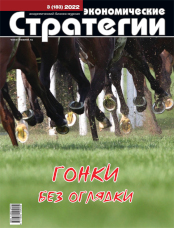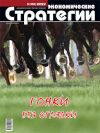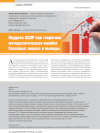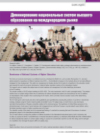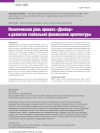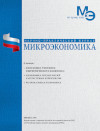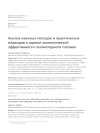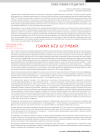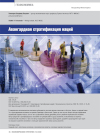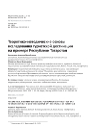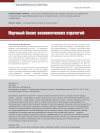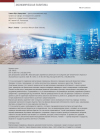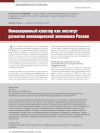The Failure of Automated System of Planning Calculations (ASPC) as Theoretical and Methodological Mistake of the State Planning Committee: Analysis and Conclusions
DOI: https://doi.org/10.33917/es-3.183.2022.142-147
Real economic growth and development is no longer conceivable without digital revolution achievements. However, to this day, introduction of these achievements into the national economy is far from being the easiest task, since its solution entails a number of methodological and conceptual problems. That was also understood in the USSR after the end of the Second World War, when society for the first time in history thought about improving the national economy management based on the latest technological solutions. The project of automating economic planning, officially called the automated system of planning calculations (ASPC) became a new unique solution of that time. Such a system was supposed to bring Soviet planning to a qualitatively higher level, however, due to theoretical and methodological contradictions contained in the concept, the Soviet digitalization project initially went the wrong way and was never brought to its logical conclusion. The question is whether it was possible to implement ASPC with the same capacities, but with the different theoretical and methodological basis.
Источники:
1. Lebedinskii N.P. Osnovy metodologii planirovaniya i avtomatizatsii planovykh raschetov [Fundamentals of Planning and Automation Methodology for Planned Calculations]. Ucheb. dlya sistemy perepodgot. i povysheniya kvalifikatsii ruk. kadrov nar. khoz-va. ANKh pri Sovete Ministrov SSSR. Moscow, Ekonomika, 1989, p. 102.
2. Metody i modeli ASPR: itogi i perspektivy [ASPC Methods and Models: Results and Prospects]. Moscow, Ekonomika, 1989, p. 6.
3. Avanproekt avtomatizirovannoi sistemy planovykh raschetov Gosplana SSSR i gosplanov soyuznykh respublik [Preliminary Design of an Automated System for Planning Calculations of the State Planning Committee of the USSR and the State Planning Committees of the Union Republics]. Moscow, 1969, p. 12.
4. ASPR — avtomatizirovannaya sistema planovykh raschetov (osnovnye printsipy proektirovaniya) [ASPС — Automated System of Planning Calculations (Basic
Design Principles)]. Moscow, TsEMI AN SSSR, 1970, 130 p.
5. Lebedinskii N.P. Voprosy sozdaniya i funktsionirovaniya avtomatizirovannoi sistemy planovykh raschetov [Issues of Creation and Functioning of an Automated System of Planning Calculations]. Ucheb. posobie. Moscow,ANKh SSSR, 1979, p. 10.
6. Veduta E.N., Dzhakubova T.N. Ekonomicheskaya nauka i ekonomiko-matematicheskoe modelirovanie [Economic Science and Economic-Mathematical Modeling]. Gosudarstvennoe upravlenie. Elektronnyi vestnik, 2016, no 57, pp. 287–307.
7. Veduta N.I. Sotsial’no effektivnaya ekonomika [Socially Efficient Economy]. Moscow, Izd-vo REA, 1999, 254 p.
8. Galushka A.S., Niyazmetov A.K., Okulov M.O. Kristall rosta. K russkomu ekonomicheskomu chudu [Crystal of Growth. To the Russian Economic Miracle]. Moscow, 2021, 360 p.
9. Elena Veduta. Otvet “Kommersantu”: chto takoe model’ mezhotraslevogo mezhsektornogo balansa [The Answer to Kommersant: What is the Model of Intersectoral Cross-industry Balance]. Regnum, 2021, November, 5, available at: https://regnum.ru/news/polit/3415609.html.


